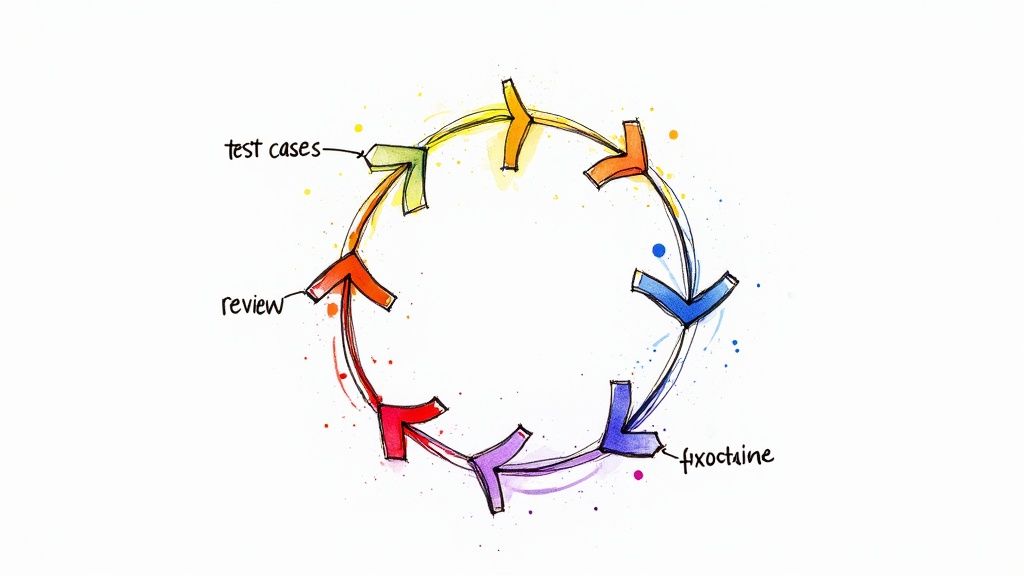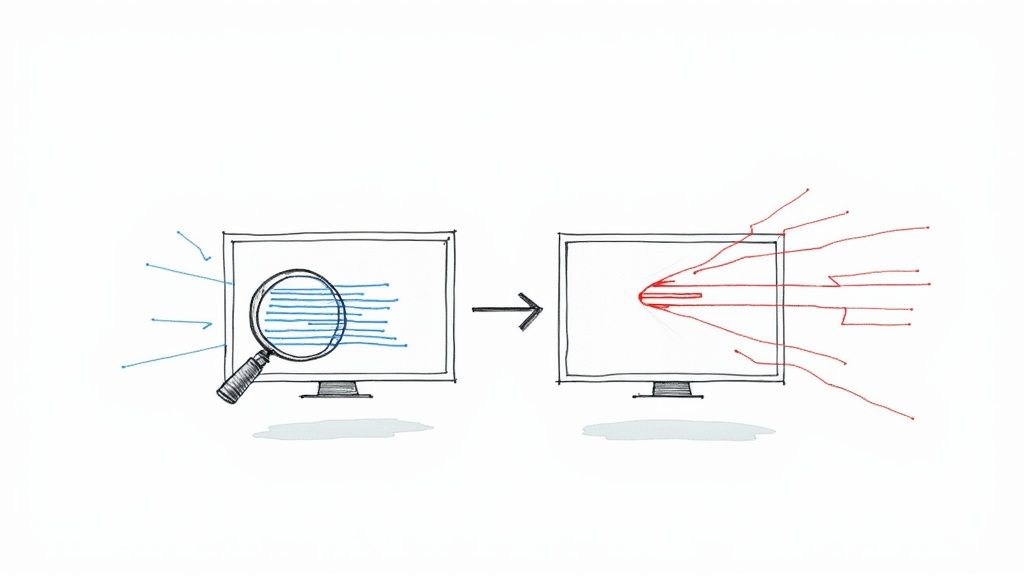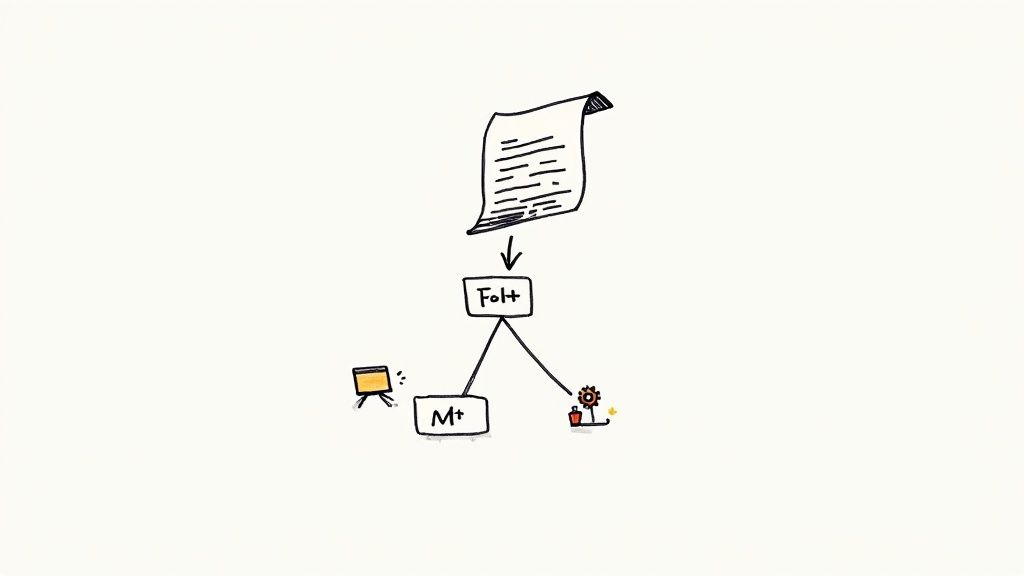How to Write Test Cases: A Complete Guide for Modern QA Success

Understanding Test Case Fundamentals

A test case is like a detailed checklist that helps testers verify if software works correctly. It spells out specific conditions and steps to check if features behave as expected in different situations. Getting a solid grasp of test cases is essential for anyone looking to become effective at software testing.
Distinguishing Test Cases From Test Scenarios
People often mix up test cases and test scenarios, but they serve different purposes. A test scenario describes what needs to be tested at a high level, while a test case lays out the exact steps and data for testing that scenario. For example, if your scenario is "User login," your test cases might include checking successful login with correct credentials, what happens with wrong passwords, or attempts from locked accounts.
Types of Test Cases and Their Importance
Test cases come in several flavors to tackle different testing needs. Functional tests make sure features work according to specifications. Performance tests check how well the system handles stress and load. Usability tests evaluate if the software is easy to use. Picking the right type helps catch issues early and ensures thorough testing of all aspects.
The Role of Test Cases in Quality Assurance Workflows
Good test cases are the backbone of effective testing. They give testers a clear, repeatable way to find bugs and ensure quality. The key is writing them in plain language that anyone can follow, avoiding technical jargon unless absolutely necessary. A recent study found that simple, clear test cases helped testers work 30% faster and catch 25% more bugs compared to complex ones. Learn more about writing effective test cases. This shows how investing time in well-written test cases leads to faster testing and better results. When done right, test cases help teams deliver reliable software with fewer issues during releases.
Building Powerful Test Case Components

Creating effective test cases requires careful attention to their core building blocks. Just like assembling a puzzle, each component needs to fit together perfectly to create a complete picture. Let's explore how to craft these essential elements to build reliable, clear, and maintainable tests.
Defining Precise Preconditions
Think of preconditions as setting up the game board before you start playing. They outline exactly what needs to be in place before running your test. For a shopping cart test, you might need a logged-in user and specific items already added. Being crystal clear about these requirements helps anyone running the test know exactly how to prepare.
Writing Crystal-Clear Test Steps
Test steps are your detailed instructions - like following a recipe when cooking. Each step should focus on one specific action. Instead of bundling multiple actions together, break them down. Rather than writing "Log in and check the dashboard," split it into "Enter username and password" and "Click login button." This makes it much easier to spot where things might go wrong.
Defining Unambiguous Expected Results
Expected results are your checklist for success. They need to be specific and measurable - no room for guessing. Rather than saying "the page loads correctly," specify exactly what should appear: "The order confirmation page displays with a unique order number at the top." This clear benchmark makes it easy to determine if a test passed or failed.
Structuring Test Cases for Clarity and Maintainability
Good organization makes test cases easier to use and update. Using a consistent format for all your tests helps everyone understand them quickly. Include key elements like test ID, name, setup steps, and expected outcomes. This structured approach can cut test creation time by 20% and boost accuracy by 15%. Learn more about effective test case writing at LambdaTest's blog.
Handling Complex Scenarios With Simplicity
When dealing with complicated features, break them into smaller, focused tests. This approach makes it easier to find specific problems when they occur. It also helps when updating tests as your software changes - you can adjust individual pieces without rewriting everything. Think of it like building with blocks instead of carving from a single piece of stone.
Mastering Test Case Prioritization
Testing is most effective when you approach it with clear priorities. By identifying which test cases matter most, teams can make the best use of their limited time and resources. This involves a careful evaluation of risks, timelines, and the potential impact of finding defects.
Prioritizing by Risk and Timeline
The best approach is to map test cases along two key dimensions - risk level and delivery timeline. When a critical feature needs to be released soon, its test cases take precedence over lower-risk items scheduled for later delivery. This prevents the common issue of rushing crucial tests at the last minute. By targeting high-risk areas first, teams can catch major issues early when there's still time to address them properly.
The 80/20 Rule in Test Prioritization
A key principle in testing is that 20% of your test cases will typically cover 80% of your core functionality. This is why teams rely on sanity tests and smoke tests that focus on the most essential features used daily by customers. Running these targeted tests after each code change helps catch issues quickly when they're easier to fix. This focused testing strategy delivers quick feedback that helps developers resolve problems faster. Learn more about effective test case writing.
Prioritization Frameworks and Adaptability
Teams can choose from several proven frameworks for test prioritization. Some emphasize business impact while others focus on technical risk factors. The right framework depends on your project's specific needs and goals. Remember that priorities aren't set in stone - they need to shift as requirements evolve. Regular review sessions help ensure your testing priorities stay aligned with what matters most.
Practical Approaches to Risk Assessment
The most effective way to assess risk is through collaboration across teams. By bringing together developers, testers, product managers and customer representatives, you get a complete picture of potential issues from multiple angles. These diverse perspectives lead to smarter decisions about which test cases need attention first.
When teams master test case prioritization, they catch critical bugs earlier and deliver better quality software. This focused approach not only makes testing more efficient but also helps projects succeed by targeting the right areas at the right time.
Elevating Your Test Case Writing Practice

Writing effective test cases is about crafting a clear roadmap for quality assurance. Beyond just listing steps, skilled QA engineers create test cases that stand up to real-world use while remaining easy to maintain and adapt over time. Let's explore key practices that can help you write better test cases.
Managing Dependencies and Documentation
Test case dependencies can quickly become complex, especially on larger projects. When one failing test triggers others to fail, finding the root cause becomes challenging. The solution? Design test cases with independent setup and teardown steps so each can run on its own. Think of it like building self-contained units rather than interconnected chains.
Clear documentation is just as important as the test cases themselves. Just as developers comment their code, QA engineers should write detailed test case descriptions. This helps new team members understand the purpose and execution of tests, making knowledge sharing smoother during team changes.
Writing Test Cases for Long-Term Value
Software changes constantly, so test cases need to stay relevant through updates. Focus on testing how features should behave rather than specific technical details. For example, when testing login functionality, verify that users can successfully authenticate - not the exact database queries happening behind the scenes. This approach helps test cases remain valid even as the underlying code changes.
Balancing Detail With Efficiency
While thorough testing is crucial, too much detail can make test cases hard to maintain. The key is finding the sweet spot between complete coverage and practical execution. Before adding each step, ask: "Does this truly help verify the functionality?" Often, you can combine related steps or remove redundant checks without losing effectiveness.
Avoiding Common Pitfalls
Several mistakes can reduce the value of your test cases. One is trying to test too many scenarios in a single case, which makes it harder to pinpoint issues when they occur. Another is skipping negative testing - deliberately testing invalid inputs and error conditions to ensure graceful handling of problems.
Remember that test cases need regular updates as software requirements evolve. Schedule periodic reviews to keep test cases current and remove any that no longer serve a purpose. This ongoing maintenance ensures your test suite remains a valuable resource throughout development.
Streamlining Test Case Management
Test case management is a vital part of software testing. It's like maintaining an organized library - when done well, finding what you need becomes quick and effortless. Top-performing QA teams excel at this by making test case management a core part of their workflow.
Version Control for Test Cases
Your test cases need version control, just like source code. With frequent requirement changes in agile teams, tracking different test case versions helps you understand how tests evolve and lets you roll back when needed. Many teams use Git to track their test documentation, giving them clear visibility into changes over time.
Adapting to Changing Requirements
As software grows and changes, test cases must keep up. New features get added, existing ones change, and bugs get fixed. Smart teams review and update their test cases during each sprint to make sure they match the current software. This prevents tests from becoming outdated or irrelevant.
Collaboration Across Teams
Great test case management depends on close teamwork between developers, testers and product owners. When everyone can easily access test cases and communicate about them, work moves faster and there's less confusion about what needs testing.
Practical Approaches to Streamlining Management
Here are key ways to improve how you manage test cases:
- Central Storage: Keep all test cases in one place that the whole team can access - either through a test management system or shared docs
- Clear Names: Use descriptive, consistent names so tests are easy to find and understand
- Regular Reviews: Check test cases periodically to remove duplicates and outdated tests while finding areas to improve
Making the Most of Test Management Tools
Modern test management platforms provide essential features:
| Feature | Benefit |
|---|---|
| Requirements Tracing | Connect tests directly to requirements |
| Test Run Tracking | Monitor progress and results |
| Reports & Analysis | Understand testing effectiveness |
| CI/CD Integration | Run tests automatically in your pipeline |
While these tools can help organize and track testing work, pick one that matches how your team works. Don't get drawn in by fancy features you won't use. Focus on streamlining your process, not complicating it.
When you combine solid test case writing with smart management approaches, you build an efficient testing system that helps deliver better software. The key is finding the right balance of structure and flexibility for your team's needs.
Measuring and Improving Test Case Impact

Creating test cases is just the beginning. To build a strong QA process, teams need to measure how well their tests perform and make ongoing improvements. Let's explore the practical ways successful QA teams track and enhance their test cases through data and proven techniques.
Key Performance Indicators for Test Case Effectiveness
The right metrics help you understand if your test cases are doing their job. Here are the essential Key Performance Indicators (KPIs) that matter most:
- Test Case Coverage: Shows what percentage of your application's features have tests. More coverage means fewer blind spots where bugs can hide.
- Defect Detection Rate: Measures how many bugs your tests find. When this number goes up, it shows your tests are good at spotting problems.
- Test Execution Time: Tracks how long your tests take to run. Faster tests mean quicker feedback cycles.
- Test Case Maintenance Effort: Shows how much work it takes to keep tests up to date. High maintenance needs often point to tests that need cleanup.
Analyzing Coverage and Identifying Improvement Opportunities
Look at your test coverage data to spot gaps. When you find parts of your app with low coverage and lots of bug reports, that's a clear sign you need more tests there. This focused approach helps you put your testing effort where it counts most.
Refining Test Case Creation Based on Execution Results
Pay close attention to how your tests perform. If a test always passes and never catches bugs, ask if it's still useful. Maybe it's testing something that doesn't matter anymore. On the flip hand, tests that keep failing for unrelated reasons might need to be split up or fixed.
Continuous Enhancement of Testing Strategy
Smart teams use their performance data to make their testing better over time. By watching those KPIs we talked about, you can spot trends and fix problems early. You might need to change which tests run first, add different kinds of tests, or improve how you write them. This feedback loop keeps your testing on track as your project grows.
Mergify can help make your testing workflow smoother by handling code merges automatically. It keeps your test requirements in check before any code gets merged, making the whole process more reliable. You can spend less time managing pull requests and more time writing good tests. See how Mergify can improve your testing workflow: Improve Your CI/CD Pipeline with Mergify





